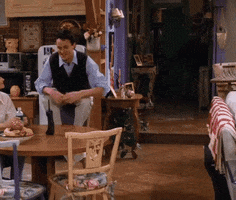Late to the game on this one, but oh, well. Most if this is too little, too late, but important for your future work.
First, any time you see peaking on your meters (or even input LED clip indicators) on a mixer or recorder, you need to back everything off a bit. The TASCAM DR-series recorders’ meters tend to show 0dBFS peaking a few dB before actual peaking, likely a safeguard design for non-sound people to keep them from actually hitting digital clipping. Still, it’s to be avoided. That’s a problem you fix when it’s happening, and not in post.
For the MM-1, you now have an extra link in your chain and gain staging is incredibly important. To properly set the gain on the MM-1, you need to find the proper starting point for your particular mic. Look up the manufacturer’s specs and find out the mic’s sensitivity rating. For example, the RØDE NTG-3 has a sensitivity of -30dBV. Match that as close as you can to the preamp gain setting. On the MM-1, that would be 28dB. If that proves too little and with increased noise in the recorder, move to 36dB.
From there, you should be looking at a line-level input setting on the DR-70D.
Well lets say you've got 50,000 different audio clips in a feature, you really want to do 100,000 different fade in and fade outs manually ?
God that sounds painful.
Assuming a pretty good chunk of those are cross-fades between dialog edits, your numbers are way off. Plus, doing this as you go means you don’t have to go back and do all of it at once.
In computer programming, you can run redundant tasks automatically because the circumstances don’t change. That’s what makes them redundant: always doing the exact, same thing. In sound, the edits between any two sound regions will have their own unique circumstances. Your input data change from edit to edit, so the process has to change to match.
My guess is that if you did it automatically you would only hear a problem in 20% of those cases and then you could manually focus on the ones that are actually an issue. it's not that complicated of a problem to ease in for pops.
I’m trying my best not to take that “it’s not that complicated” comment as an insult to those of us who have honed our craft with sound over many years. There are lots of intricacies, as Bob said. Every crossfade has a different reason and rhyme and needs individual care to be effective. These things take time and attention. They aren’t things on which you can just slap a generic fix and call it a day; not to do it well, anyway.
On a big-budget feature, there’s a huge set of sound teams all working on separate pieces and parts individually, and those parts aren’t brought together until nearer to the end of the process, when they’re assembled and mixed for the final print.
On a smaller-budget feature, there may only be 2-3 people working on sound in post, or even just 1 (aside from the composer). They may not get the exact same results as they would if they had the larger budget and team, but they’re dedicated and it makes a world of difference in the final product.
Taking it on all by yourself, editing picture and sound, creating all the visual effects, creating sound design, and the making final mix, is akin to shooting a project alone. If you have to worry about camera, lighting, sound, direction, and all the other issues without anyone there to help, things are going to get glossed over. Your attention is just too spread out, and you may even be taking on roles that aren’t necessarily your strongest skills. It’s one thing to do all your own post on a short (and I’ve worked on many that had dedicated sound design and post mixers), but to take on a feature without someone else handling your post sound is highly ill-advised.
Side note: if you have Amazon Prime, you should watch the documentary “Making Waves: The Art of Cinematic Sound”. Last I checked, it was free to watch. Not sure if that’s still the case, but it’s worth the watch either way.
 drive.google.com
drive.google.com
 drive.google.com
drive.google.com





 ) and my boss had a command in Nuendo hooked up to a contour design shuttle that would add a fade in/out at the cursor's position. Sped things up a ton. Used the jog wheel to slide where we wanted the fade, hit a button, and fade was in.
) and my boss had a command in Nuendo hooked up to a contour design shuttle that would add a fade in/out at the cursor's position. Sped things up a ton. Used the jog wheel to slide where we wanted the fade, hit a button, and fade was in.